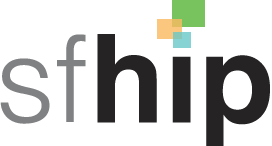Resources, Assets, Strengths
And
Challenges And Barriers
Table of Contents
Introduction
PART I. Key Informant Focus Group
San Francisco Health Improvement Partnership (SFHIP) Focus Group Notes—September 20, 2018
PART II. Community Focus Groups
Asian Pacific Islander Health Parity Coalition Focus Group Notes—September 27, 2018
African American Health Equity Coalition Focus Group Notes—October 6, 2018
Latino/Chicano/Indigena Health Equity Coalition Focus Group Notes —October 10, 2018
PART III. Focus Groups with Pregnant Women Convened by Homeless Prenatal Program
Spanish-speaking Pregnant Women Experiencing Food Insecurity
Focus Group Notes –September 20, 2018
African American Pregnant Women Experiencing Food Insecurity
Focus Group Notes—October 5, 2018
Chinese-speaking Pregnant Women Experiencing Food Insecurity Focus Group Notes—October 11, 2019
Multiethnic English-speaking Pregnant Women Experiencing Food Insecurity
Focus Group Notes—October 17, 2019
Introduction
The following pages include two basic, but significant questions for the 2019 San Francisco Community Health Needs Assessment (CHNA). The first question seeks to understand, from the community’s perspective, what the resources, assets and strengths are that support the community’s health, and secondly, to learn about the challenges and barriers each community is facing, and the impacts on their health.
The report is divided into three parts. Part I includes responses from key informants. The San Francisco Department of Public Health convened a key informant stakeholder focus group representing:
- Tenderloin Health Improvement Partnership
- Chinese Hospital
- University of California, San Francisco
- Asian Pacific Islander Health Parity Coalition
- San Francisco Clinic Consortium
- Metta Fund
- San Francisco Department of Public Health
- African American Health Equity Coalition
- Latino/Chicano/Indigena Health Equity Coalition
- Dignity Health
- Sutter Health California Pacific Medical Center
Part II includes the Asian Pacific Islander Health Parity Coalition, the African American Health Equity Coalition, and the Latino/Chicano/Indigena Health Equity Coalition. Part III includes responses from four different focus groups of pregnant women experiencing food insecurity, which were all convened by Homeless Prenatal Program. Those groups include: Spanish-speaking pregnant women, African American pregnant women, Chinese-speaking pregnant women, and Multiethnic, English-speaking pregnant women.
Participants provided important feedback about issues affecting their health. Some of the assets and resources were the role of community, places of worship, family, access to food resources, education, and, resilience and perseverance, as positive impacts. Among the barriers to their community’s health, responses highlighted cost of living, limited resources, safety concerns, behavioral and health conditions, feelings of shame and neglect, and racism/discrimination.
Part I.
Key Information Focus Group Notes
SAN FRANCISCO HEALTH IMPROVEMENT PARTNERSHIP (SFHIP)
KEY INFORMANT FOCUS GROUP NOTES—SEPTEMBER 20, 2018
Tenderloin Health Improvement Partnership
What are the healthiest characteristics of this community? What supports people to live healthier lives?
- Access to care: More Tenderloin residents have insurance as a result of the ACA. Healthy SF enrollment dropped by 75-85% between 2010-2015, in both the Tenderloin and Citywide, indicating more individuals moved to MediCal or health insurance through the exchange. About 4% of Tenderloin residents were still enrolled in Healthy SF as of December 2015. Integrated service provision i.e. co-location of services like housing and health clinic (e.g. Tom Waddell@ TNDC Kelly Cullen Community building)
- Access to Healthy Food: There is significant momentum to increase healthy food access for all residents of the Tenderloin. The Healthy Retail SF Program has worked to convert five corner stores into retailers that sell affordable food and minimize the visibility of alcohol and tobacco products. 57% of retailers accept CalFresh benefits, compared to 40% [of] San Francisco.
- Access to Open Space and Physical Activity: Since reopening since 2015, Boeddeker Park is a safe and active community hub. Represents 1-acre of land in the Tenderloin serving over 70,000 visitors and providing more than 3,400 hours of activities through a partnership between Boys & Girls Club of SF, YMCA, Safe Passage, + the San Francisco Police Department. Tenderloin Community Benefit District Safe Passage program creates safe corridor for children and seniors to and from community programs and school Access to Behavioral/Mental Health Services (overdose prevention services): Working with community partners—needle exchange, outreach services to people who are publicly injecting. Presented by the Safer inside community and the Tenderloin Health Improvement Partnership (TLHIP), designed by Capital One Design Pro Bono, and hosted by GLIDE. Advocacy continues to ensure policy gets approved by Governor Brown that will allow SF to open pilot site for safe injections.
- Community Connections: Ethnically diverse, thriving mixed-income neighborhood. 100+ non-profit and businesses People support one-another—Support residents by starting with what they’re already good at and deeply care about (e.g. TLCBD) safety, advocacy, environmental design. 4corner Friday is an example of a community-wide event launched by a neighborhood safety group. This effort has helped visibly change two of the most challenged blocks of Golden Gate and move negative and criminal activity out of the corridor and create a space for neighbors to connect and build relationships with each other, co-funded with private partners. Block safety groups empower residents and connect directly with city agencies (e.g. DPH, OEWD, SFMTA, Department of Homelessness. Partnering with City Agencies.
- La Voz Latina
- Code Tenderloin, TLCBD, Downtown streets
- What are the biggest health issues and/or conditions your community struggles with?
- Residents (housed, unhoused) who have experienced trauma or being chronically homeless/marginally housed for many years
- Highest density housing with limited affordable housing
- Poverty: 520 families living below poverty level (11.49% compared to 7.45% of families CCSF)
- Highest rate of severe and fatal pedestrian injuries in the City, with 50 per 100 road miles versus 8 per 100 road miles in San Francisco
- Drug Dealing/Drug Using
- Crime and Safety
What are the biggest health issues and/or conditions your community struggles with? What do you think creates those issues?
- Residents (housed, unhoused) who have experienced trauma or being chronically homeless/marginally housed for many years
- Highest density housing with limited affordable housing
- Poverty: 520 families living below poverty level (11.49% compared to 7.45% of families CCSF)
- Highest rate of severe and fatal pedestrian injuries in the City, with 50 per 100 road miles versus 8 per 100 road miles in San Francisco
- Drug Dealing/Drug Using
- Crime and Safety Systemic issues stemming from the lack of safety, opportunities for healthy choices, community connections, social inequities, institutional inequities, living conditions, (physical, social/economic/work, service environment) risk behaviors, disease & injury, mortality.
- Underfunding neighborhood, lack of investment in coordinated social services and public spaces
- These conditions ultimately influence death of 2011-2015 in the Tenderloin is accidental poisoning and exposure to noxious substances, followed by Ischemic Heart Diseases, Lung/Trachea/Bronchial Cancer, Hypertensive Disease, Dementias, Alzheimer’s, and Other Degenerative Diseases of the Nervous System. (CDPH, Death Statistical Master File, 2011- 2015) Mental health and substance use disorder are top health issues for Tenderloin residents. Tenderloin residents are hospitalized more often for ambulatory care sensitive chronic diseases, 148.1 hospitalizations-age adjusted rate per 10,00 residents, compared to 60.6 hospitalizations-age adjusted rate per 10,000 residents [for] San Francisco (OSHPD, Hospital Discharge Data, 2012-2014.
Chinese Hospital
What are the healthiest characteristics of this community? What supports people to live healthier lives?
- Desire to learn
- Value Education
- Respect for the elderly
- Family oriented
- Child-centered within the family
- Diligent
- Social support among Benevolent Associations’ members
- Using traditional exercises (such as Tai chi, Chi Gong, ballroom dancing) for physical activity
- Using food to promote wellness (Chinese food therapy)
What are the biggest health issues/and or conditions your community struggles with? What do you think creates those issues?
- Chronic diseases
- Stigma associated with mental health disorders
- Low usage of mental health services
- Caregiver burden and stress
- Lack of awareness and stigma associated with advance health care planning
- Lack of awareness about palliative care
- Low participation in clinical trials
- Late detection of cancers
- Osteoporosis
- Poor oral health particularly among children
- Gambling
- Smoking
- Domestic Violence
- Senior loneliness
- Insufficient culturally competent educational campaigns
- Lack of Funding
University of California, San Francisco
What are the healthiest characteristics of this community? What supports people to live healthier lives?
- Housing
- Legal services
- Transportation
- Community
What are the biggest health issues and/or conditions your community struggles with?
- Mental health
- Substance abuse
- Social isolation/conditions
- Mobility Challenges
Asian Pacific Islander Health Parity Coalition
What are the healthiest characteristics of this community? What supports people to live healthier lives?
- Many people walk in this large city, unless environments are not safe.
- Many of our immigrants and cultural communities work to assist each other alongside community organizations
- Community organizations as well as accessible public services support them
- Activism is the antidote to trauma
What are the biggest health issues and/or conditions your community struggles with?
- Behavioral—access to services
- Trauma of migration
- Socioeconomic disparities
- [limited] access to food
- Living conditions
- Homelessness/Housing instability
San Francisco Community Clinic Consortium
What are the healthiest characteristics of this community? What supports people to live healthier lives?
- Our community is so diverse. We cannot specify, but each of our clinics focus on language and cultural needs of their community, for example Mission Neighborhood Health Center holds mono-lingual Spanish support groups
What are the biggest health issues and/or conditions your community struggles with? What do you think creates those issues?
- We serve a lot of homeless/marginally housed
- Big city struggles: immigration status, housing, mental health, substance use
- I believe that the long history of racism and disrespect for low income immigrants caused problems, exacerbated by lack of affordable housing, and housing insecurity
Metta Fund
What are the healthiest characteristics of this community? What supports people to live healthier lives?
- Social norms that appreciate outdoor activities/weather
- Joint aging and disability partnership/Area Agency on Aging
- Strong Activism/community action
- Strong culture of CBO/community solutions
What are the biggest health issues and/or conditions your community struggles with? What do you think creates those issues?
- Racial segregation/out-migration of POCs
- Income inequality/poverty
- Housing costs/homelessness
- Social isolation/maintaining healthy and supportive environment
- Threat to public safety net supports
- Mental Health/substance abuse
San Francisco Department of Public Health
What are the healthiest characteristics of this community? What supports people to live healthier lives?
- Social connections/ Social support
- Social cohesion
- Resilience
- Spirituality
- Perseverance
- Community resources
- Good jobs
- Housing
What are the biggest health issues and/or conditions your community struggles with? What do you think creates those issues?
- Poverty
- Racism/Institutional Racism
- Trauma (historical, structural, etc.)
- Displacement
- Housing insecurity
- Food insecurity
- Socioeconomic insecurity
- Discrimination
- Unemployment/job insecurity
- Mental health
- Substance use
- Violence
- Physical illnesses
- Inequities of work conditions
- Toxic stress relative [to] poverty
- High cost of living
African American Community Health Equity Coalition
What are the healthiest characteristics of this community? What supports people to live healthier lives?
- Stories
- Language
- Music
- Art
- Culture
- Grit
- Self Determination
- Kinesthetics
- Spirit
What are the biggest health issues and/or conditions your community struggles with? What do you think creates those issues?
- Structural racism
- Toxic stress
- Poverty
- Trauma
- Social determinants [of health]
- Structural, instructional displacement
Part II.
Community Focus Groups
Asian Pacific Islander Health Parity Coalition
Focus Group Notes—September 27, 2018















